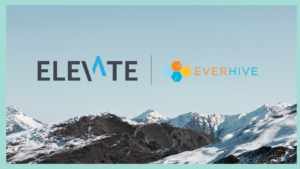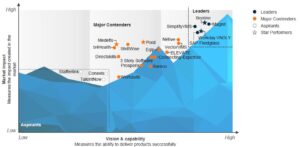Today’s talent acquisition and human resources leaders are facing new challenges, such as return to office planning, in addition to reskilling, restructuring, and acquiring the talent needed to meet business demands. At the core of all of these issues is having a solid strategic workforce plan.
With the make-up of the workforce continuing to evolve to a mix of worker types, having visibility into the total workforce, or not having that visibility, impacts several elements of a talent plan. This is more than just theory. Here we identify three business scenarios where having visibility into, and rapid access to, your entire workforce would enable talent acquisition and HR leaders to better address the challenges they face. The true total workforce is defined as your W-2 employees as well as independent contractors, temporary employees via a staffing firm, and consultants.
1. Correct data on the current, total workforce
Getting this right is critical, and impacts several initiatives. It’s the basis for demand planning and a gap analysis for hiring, it impacts budgets, and will be a critical component of determining return to work processes and possible resulting real estate changes. It sounds simple but is not easy without a vendor management system (VMS). However, non-worker information is typically decentralized, disparate, and incomplete, with no one centralized system for data. A VMS provides real-time data intelligence on any worker type that is currently engaged or was engaged, the corresponding cost of each resource, and contact information for each resource, or their employer of record. We won’t forget how critical it was to communicate quickly and frequently with the entire workforce in early 2020, and we hope it won’t happen again, but talent acquisition leaders who have deployed a VMS will be prepared.
2. Compliance with labor regulations
This is a multi-faceted issue. As a human resources leader, there are numerous federal, state, and local labor regulations that you are managing for your direct employees. The US Department of Labor noted there are currently 180 federal labor laws alone. When it comes to the contingent workforce, where the worker is not your employee of record, there are still numerous compliance concerns to be considered. Most employers require some sort of pre-employment screening for all workers, including non-employees, and require staffing firms to conduct them. However, without a vendor management system, companies lack a single system of record to ensure all screenings have been conducted, and that proper on-boarding, and off-boarding, has been completed. Today’s VMS solutions provide detailed on-boarding checklists that enable staffing suppliers to quickly update the VMS to validate proper screenings and reduce cycle time, and hiring managers have access to easy-to-use dashboards that track on-boarding completion. The VMS then tracks the lifecycle of the worker’s engagement, supporting adherence to tenure limits. ELEVATE’s VMS as an example, has a highly configurable, personalized, on-boarding tool that can be modified as requirements and regulations change. For instance, companies in Philadelphia must abide by Philadelphia’s Fair Workweek law, which went into effect during 2020, requiring advance notice of upcoming schedules. If hiring managers are creating schedules for temporary workers, they must advise them 10 days in advance. In this particular scenario, ELEVATE’s VMS could be quickly configured to flag managers of when schedules are due for temporary workers. This is a critical feature for businesses to navigate, as regulations will only continue to grow.
Proper worker classification is a continued area of concern for leaders as this topic is high profile, faces a dynamic regulatory environment, and can lead to expensive fines and audits . Without a VMS, proper worker classification is often decentralized, not tracked, and lacks proper documentation. A VMS, the same system of record across the enterprise for all non-employee acquisition and tracking, can ensure these workers have been properly classified prior to engagement, and are documented and managed accordingly.
3. Finding and acquiring the best talent
COVID-19 caused a dramatic shake up in employment, with many workers being displaced. Unlike other economic events, many industries were negatively impacted, while many needed to hire faster than ever before, leading to “who’s hiring during COVID” to be a top search term and a popular hashtag on social media. In either scenario, as companies look to the future of their workforce, there will likely be a combination of hiring, reskilling, and restructuring, with a focus on ensuring access to the best workforce available. The “best of” workforce today engages in may different ways. Freelancing continues to rise, previous employees may need to be brought back, and many highly skilled workers have created small consultancies that prefer to engage project by project, via a statement of work. Business leaders and hiring managers have wanted to tap into these unique workforces for years, often times without the awareness or support of talent acquisition, for a variety of reasons. An agile VMS enables any job opening for a non-employee to be released into the talent marketplace. Those candidates can then be reviewed quickly yet thoroughly, with benchmarked and transparent engagement terms and pricing, and HR can breathe easy that the organization has access to the right talent, without impacting any of those other areas of concern.
These above noted challenges will continue into 2021 and beyond, unless addressed. Selecting a vendor management system can address these issues and provide numerous benefits that will result in a company having the right talent in place. We work with talent leaders every day in these areas and have the solution which best fits your needs. For more information on ELEVATE VMS, contact us today.





